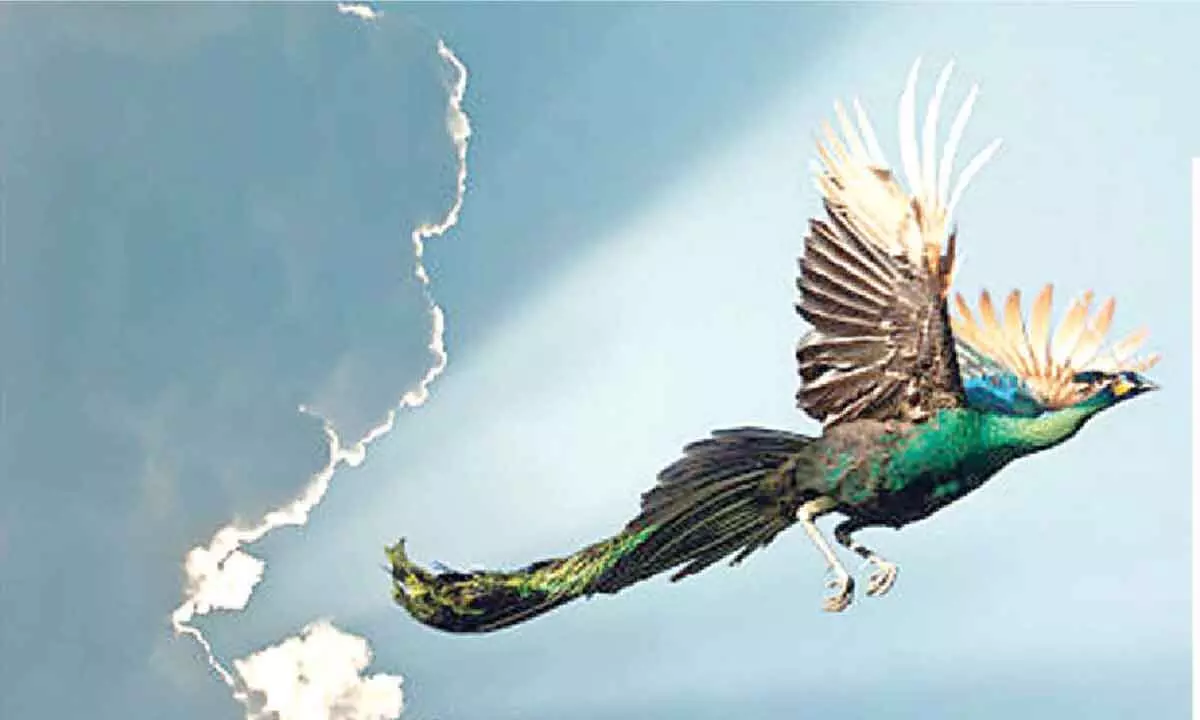Peacock at 6,500 feet in Uttarakhand unusual, say experts

Wild life experts have interpreted the sighting of a lowland bird like the peacock at a height of 6,500 feet in Uttarakhand as an unusual development caused by ecological changes in the Himalayan region due to increased human activity.
Dehradun/Pithoragarh : Wild life experts have interpreted the sighting of a lowland bird like the peacock at a height of 6,500 feet in Uttarakhand as an unusual development caused by ecological changes in the Himalayan region due to increased human activity.
The bird was spotted twice in the forests of Bageshwar district in the state. It was first seen in the Kafligair forest range in April and then in Kathayatbara forests on October 5, a senior official said. “It is surprising that the peacock which is usually found at an elevation of 1,600 feet has been sighted at an altitude of 6,500 feet. It is due to ecological changes that have started affecting wildlife migration,” Dhyan Singh Karayat, a forest official in Bageshwar forest division said on Monday.
Extinction of bird species caused by humans over the last 1,30,000 years have substantially reduced functional diversity of birds in the environment, a new study has found. The extinction also resulted in a loss of three billion years of unique evolutionary history, it found. At least 600 bird species, including the ‘Dodo’ and songbird ‘Kaua`i `o`o’, have become extinct because of humans, since the Late Pleistocene -- the era between 2.6 million years ago to 11,700 years ago -- when modern humans started to spread throughout the world, researchers, led by those at the University of Birmingham, UK, said.
Dodo, related to the pigeon family, was a heavy flightless bird native to the island of Mauritius, while Kaua`i `o`o was native to the Hawaiian island of Kaua`i and was declared extinct in 2023. “About five per cent of known bird species have gone extinct over the past 1,30,000 years, and these species are more distinct in terms of their traits and lineages than would be expected by chance, especially those that went extinct before 1500 CE (the early modern period),” the authors wrote in the study published in the journal Science. “Species, functional, and phylogenetic diversity losses are greatest on islands,” they said.
The authors said that the loss of functional diversity is significantly larger than that expected based on the number of extinctions and will likely have had far-reaching implications, given the wide range of ecological roles executed by birds. The study is “vital for setting effective targets for global conservation strategies, as well as ecosystem restoration and rewilding efforts,” lead author Tom Matthews, from the University of Birmingham, said.















